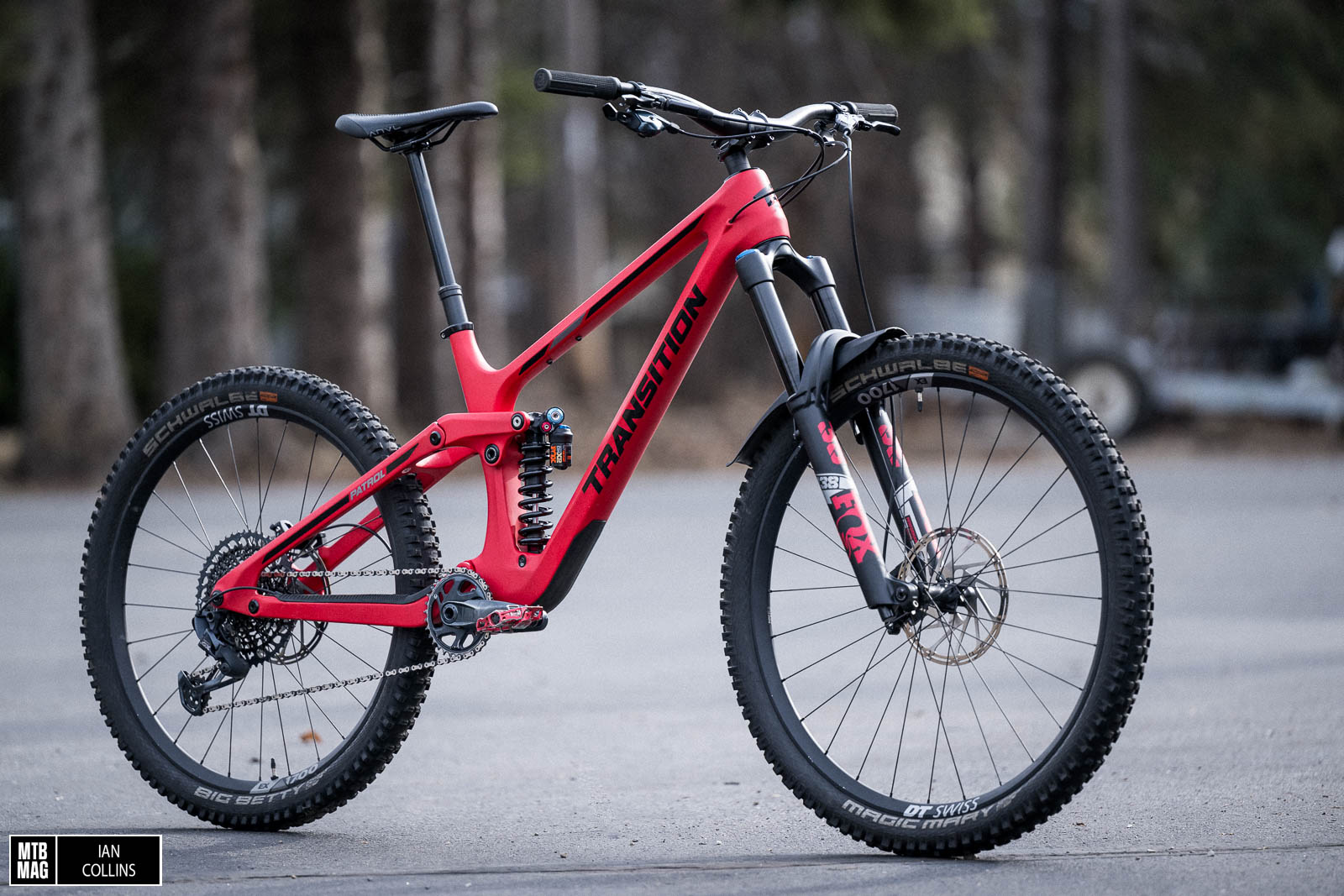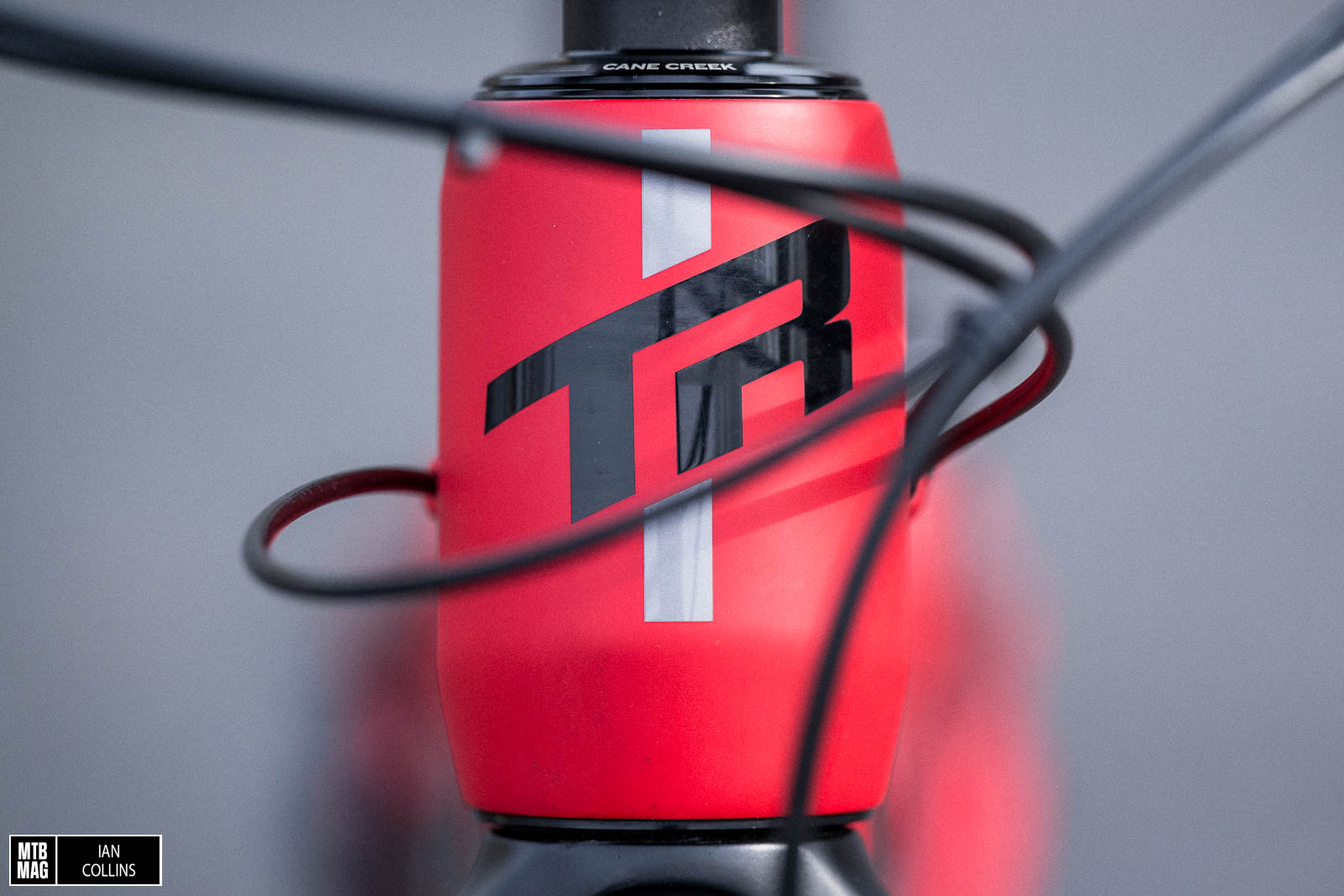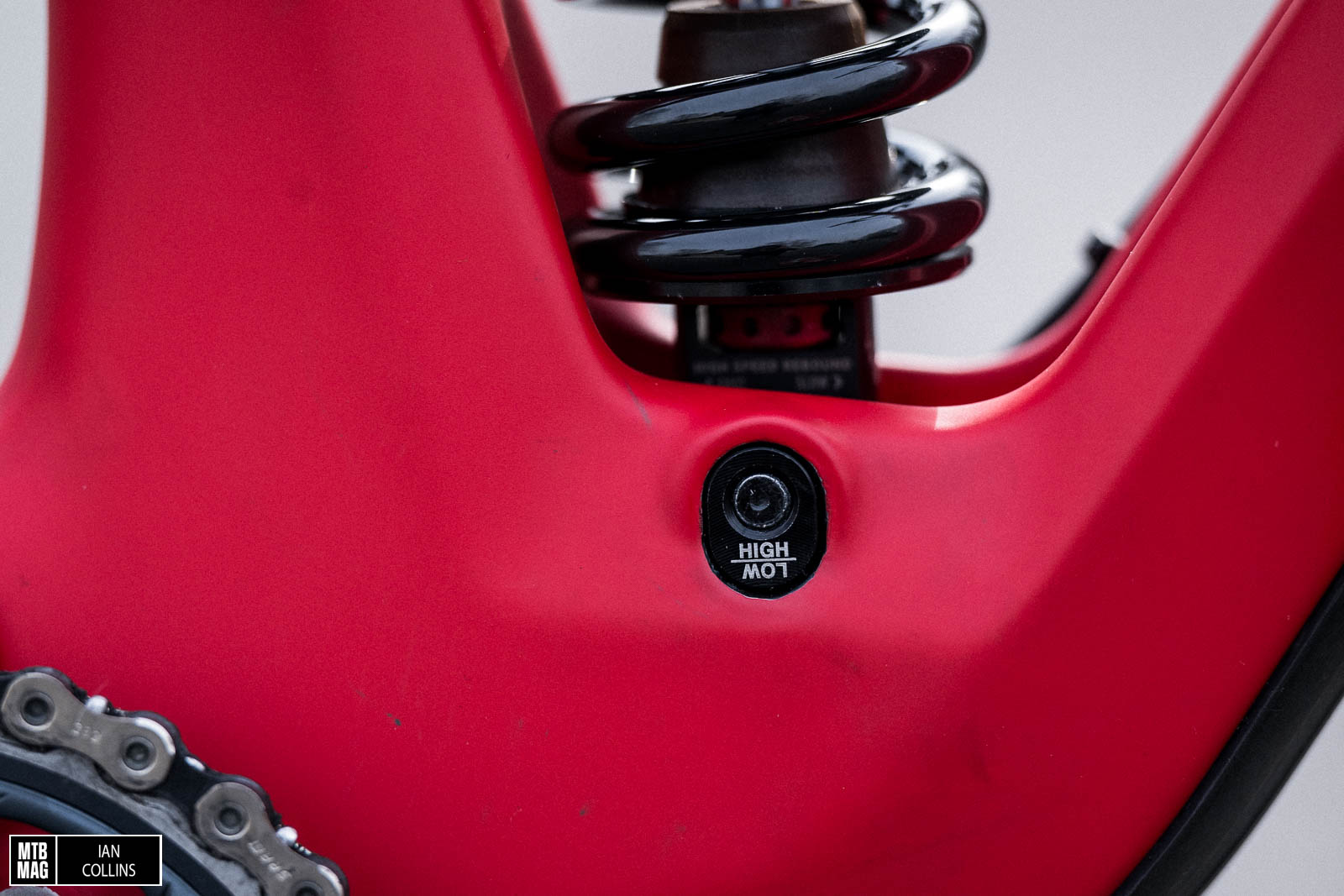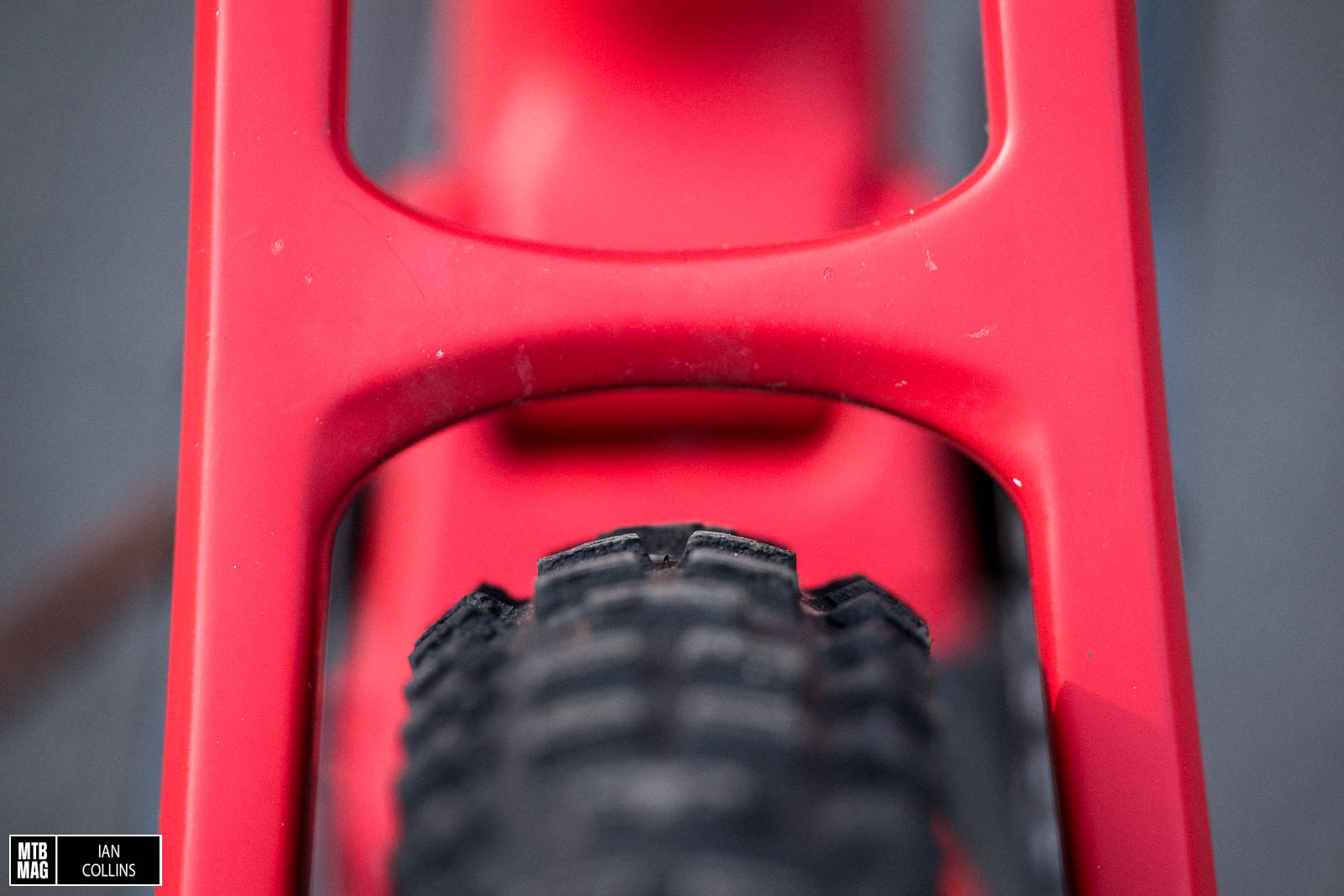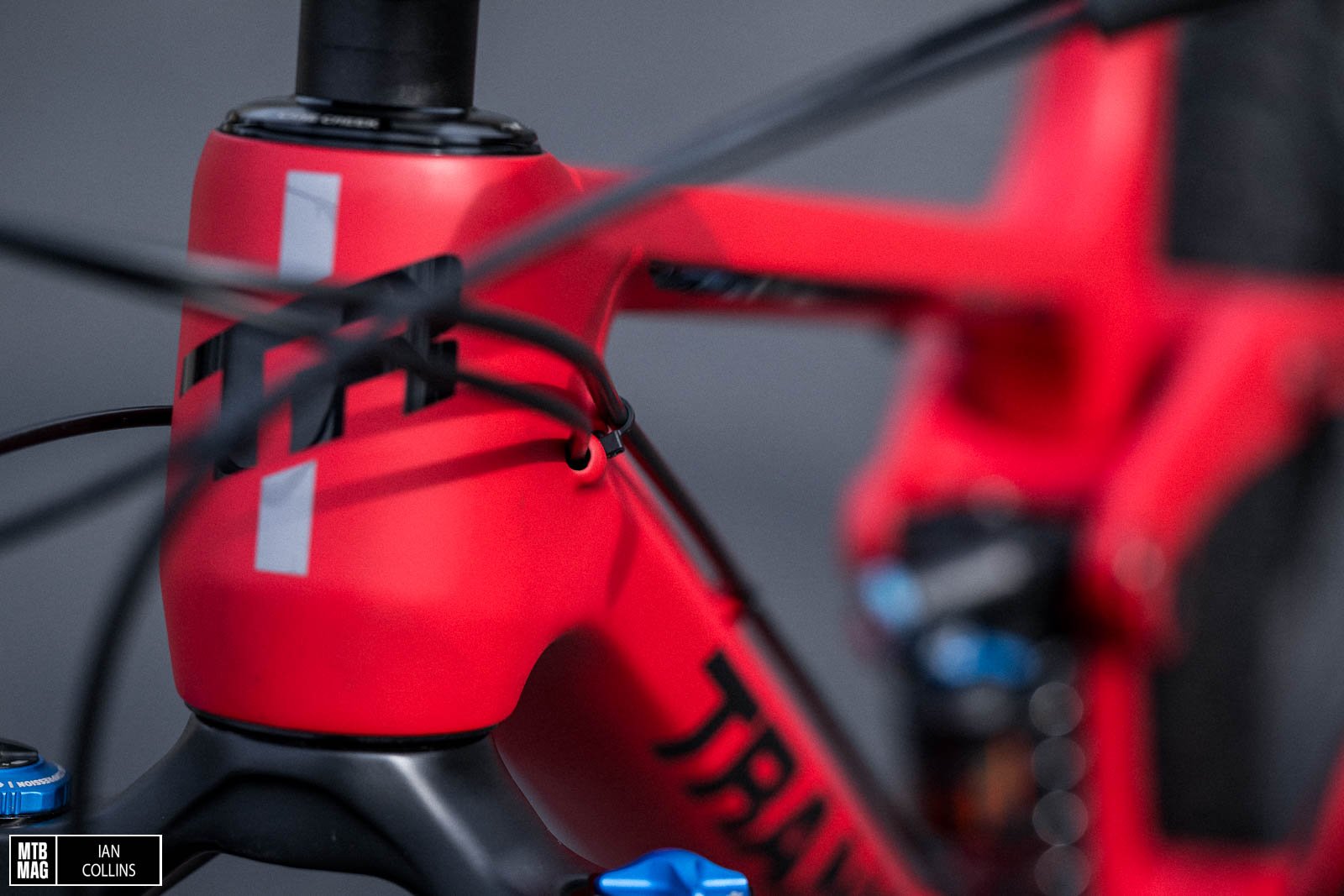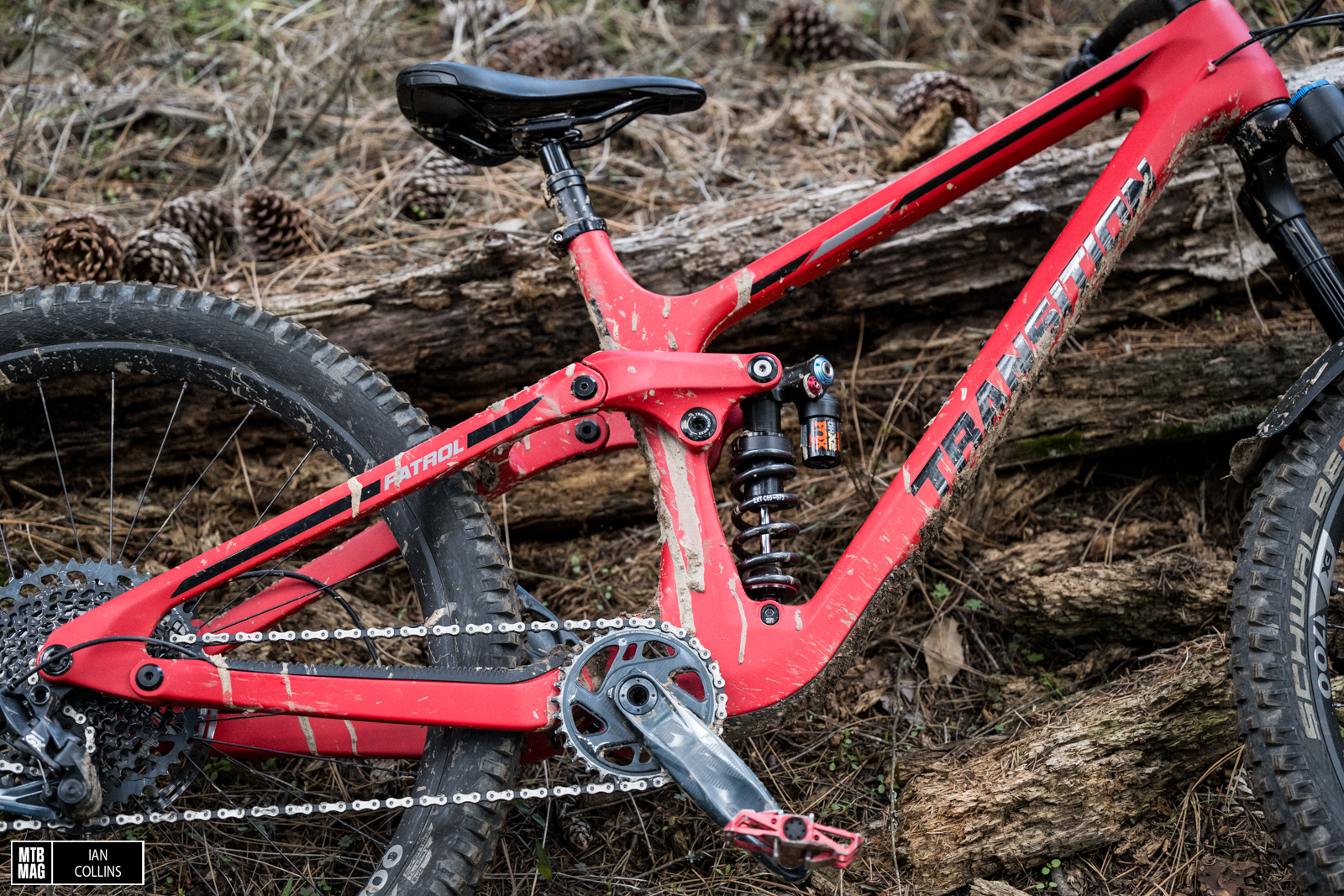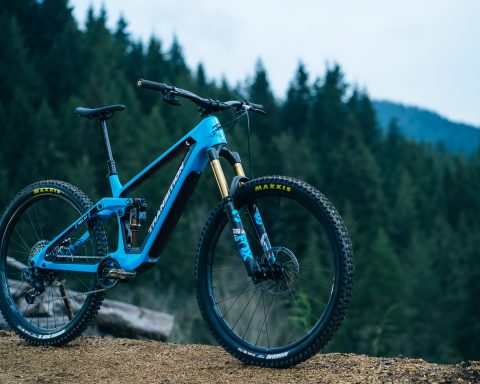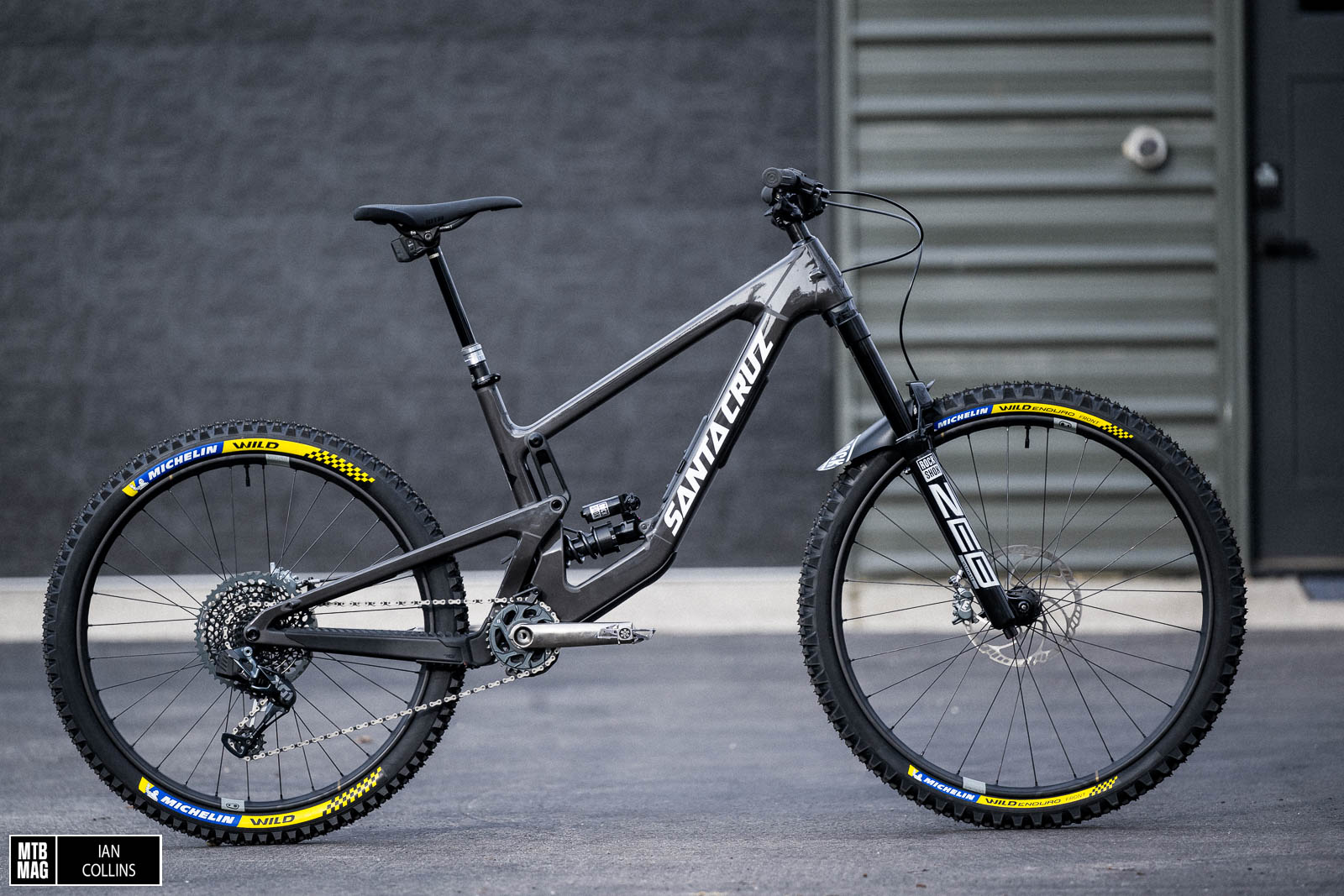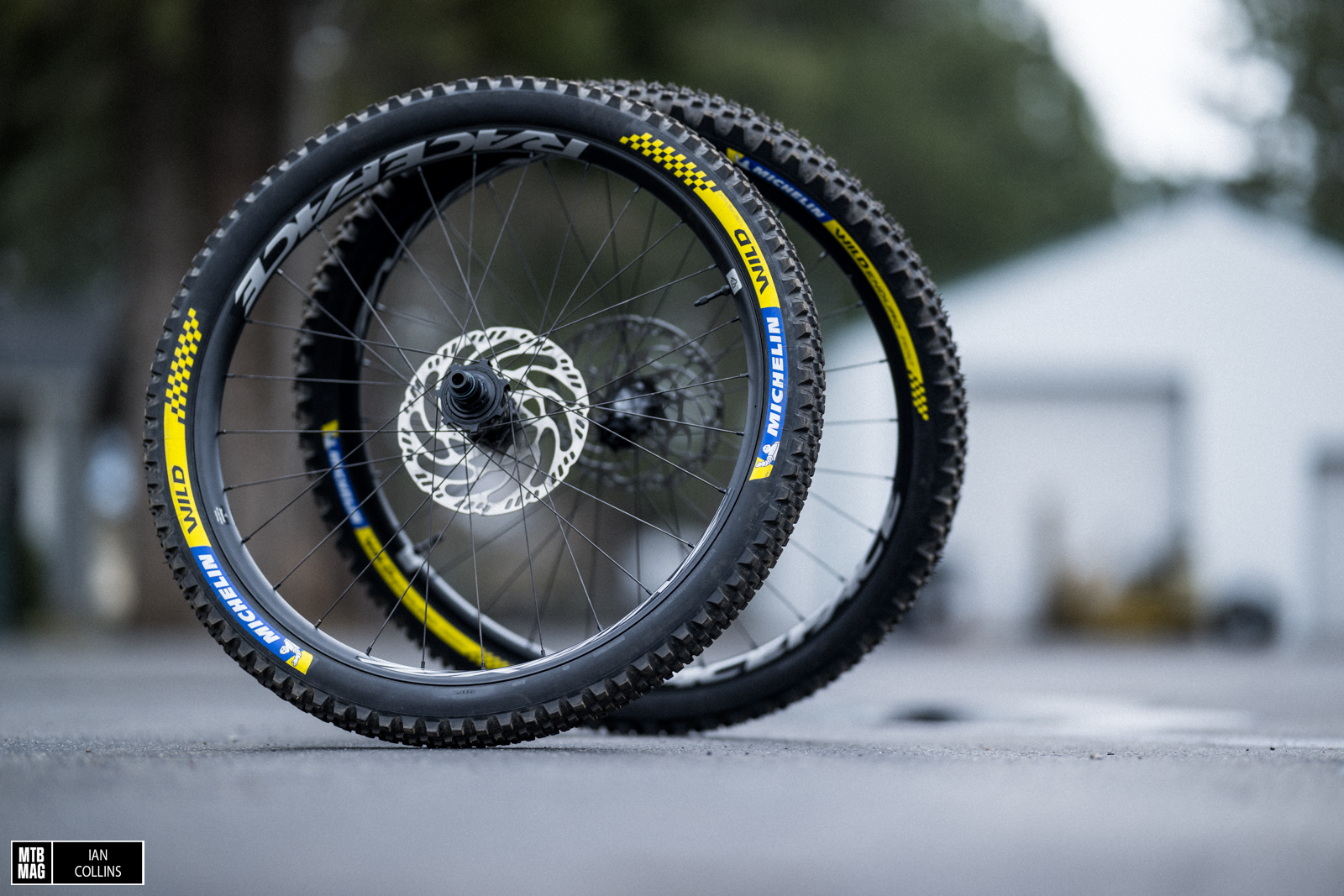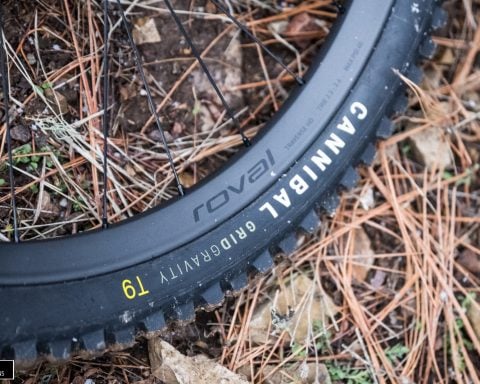When Transition launched the the newest version of the Patrol, its initial debut was a metal only affair with now mixed wheel offering being available solely with an aluminum frame. Fast forward a few months and the Bellingham, WA brand trotted out a much lighter carbon fiber frameset, which we managed to spend some time on, testing it as a frame. While this article will mainly be centered around the on-trail attributes of the Patrol frameset itself, we’ll still spend some time discussing the build on offer that most closely resembles ours. For some back story – due to a dearth of product availability in the bike industry in general, when we picked up our Patrol Carbon the spec wasn’t fully stock, but we will do our best to glean some insights into the bread and butter GX Carbon build further on in the article…
A good chunk of my time was spent on the bike as pictured above, which is with the 170mm travel bump and a coil rear shock. Prior to the above layout, I logged quite a few miles with the bike in its stock form with 160mm front and rear travel mated to a Fox DHX2 air rear shock. Needless to say the bike offers more options than a simple high/low flip chip might indicate on first glance…
Details Transition Patrol Carbon
- Mixed wheels – 29″ front / 27.5″ rear
- Carbon Fiber construction
- S – XL sizing (Large tested)
- 160mm front / rear travel – 170mm front / rear compatible
- Threaded bottom bracket
- Universal Derailleur Hanger
- Boost hub spacing
- $3,699 USD (frame only)
- Lifetime Warranty
The keen eyed amongst us might have noticed that the Patrol’s headtube doesn’t look quite like those on other Transition bikes. This is because it can accept a dual crown fork, adding to its freeride credentials. Before the TR11 came out, Nico Vink had been spotted on an aluminum Patrol with a dual crown Ohlins fork fairly regularly.
As standard on most Transition models, there is a flip chip in the lower shock eyelet that allows for .5º adjustment of head and seat tube angles, plus a 7mm difference in bottom bracket height.
The rear tire clearance is plentiful, with room for up to 2.6″ rubber.
While it can be a contentious topic, Transition remains firmly committed to keeping their rear brake line externally routed while the rear derailleur and dropper seatpost cables are tucked inside the frame. Personally, I like this approach as you don’t even see the hose from the drive side, so it still looks nice aesthetically. The most obvious benefit however is that this approach is a dream come true for mechanics and privateer racers as it simplifies maintenance.
Another nod to easy maintenance is a threaded bottom bracket, which is standard on every Transition.
The Patrol’s molded chainstay rubber did a fine job of keeping things quiet while also protecting the frame nicely.
As far as suspension is concerned, the Patrol has a rate of 24% progression. The curve is fairly linear throughout with a subtle ramp at the end and no gimmicks. That makes it well suited to either air or coil rear shocks. Props to Transition for keeping the average leverage rate fairly low as well.

The main downtube protection is a full rubber wrap that extends from the lower third down to the bottom bracket. Should you be inclined, you can snag a shuttle guard here.
Transition won’t let you stray too far from the pertinent information during the tuning process.
While Transition doesn’t offer internal downtube storage, the on-frame solution is still warmly welcomed. With a bolt on Wolftooth strap, I was able to easily fit a spare tube, tire boot, CO2 and head, plus a tire lever and a multi tool. The frame also clears a full size bottle cage with room to spare.
Lastly, the Patrol features SRAM’s Universal Derailleur Hanger, so not only is it easy to find spares, but it is future proofed and ready for SRAM’s new Eagle Transmission drivetrains.
Geometry Transition Patrol Carbon
With a slightly limited four size spread available, Transition did still manage to sneak in two different chainstay lengths that have 6mm separating the Small and Medium models from the Large and XL frames. I found that the 480mm reach (high setting) on my size Large was spot on for me at 6 feet tall, as it should be. Numbers like a 63.5º head angle and 78.1º effective seat angle indicate that this bike means business on the descents, but at the same time is very well capable of getting back up the hill.
On the trail
The Patrol model that’s closest in spec to what I tested is the GX model, which retails for $6,699 USD, but features Race Face wheels and TRP brakes as well as a a Fox Float X rear shock. Most everything else I rode was the same as stock, and if I’m honest I would actually prefer the TRP brakes over the Codes anyway. As I mentioned prior, the Large was a perfect fit and in fact, I wouldn’t change a single aspect of the Patrol’s geometry. As far as the layout is concerned, personally I am thoroughly sold on a mixed wheel setup as I think it just works well for my riding style. That said, I realize that it’s not for everyone…the Patrol could certainly hold its own between the tape at the occasional enduro race – especially with a 170mm travel bump – but there will be plenty of people who would understandably hold out for a straight 29″ setup if they spend quite a bit of time racing – especially on blind terrain. For that, the Spire would be the hot ticket…
Beginning with climbing, from a body position standpoint the Patrol is very upright and therefore was both comfortable and efficient on the more difficult uphill sections. This is largely due to its steeper 78.1º seat tube angle (high position). One thing of note is that while the bike’s effective seat tube angle is quite steep, so is its actual seat tube angle. Therefore longer legged riders won’t get put too far back toward the rear axle if they run a high saddle position. As a long legged rider I especially appreciated this. From a kinematic standpoint I found the Patrol Carbon also climbed very nicely as well, given how much travel it has. The rear suspension is very settled and composed without exhibiting much bobbing. In the stock 160mm setting with an air shock the bike was a bit more sprightly and efficient on the climbs, less so with the 170mm/coil option, but still impressive. On most long climbs I would lock out the rear suspension, but all in all the Patrol is efficient at getting you back up the hill.
Once pointed downhill, the Patrol is – in a single word – fun. It’s hard for me to put a finger on but every Transition I have tested has one thing in common: a great deal of pop. I’m not sure if it’s the carbon layup, the kinematics or some combination of the two but the Patrol – like the Sentinel, the Spur and the Spire – is freakishly boosty and loves to get in the air. I find that on jumps which I would typically have to yank to clear, just a little blip gets me well past the landing. This aspect being encoded into the bike’s DNA, as well as excellent geometry, low weight and a mullet format add up to deliver a bike that is simply a blast to ride.
As far as performance is concerned in the rough, the Patrol has a fair bit of anti-squat – which is partly responsible for its poppy nature – so it’s not really a gushy feeling plow machine. I do think the suspension is thought out well enough so that it has the magic combination that we’re all after: light and sensitive off the top, supportive yet compliant in the mid stroke and with a nice resistance to harsh bottom outs at the end stroke. Having ridden both air and coil shocks on the Patrol, I can say that unsurprisingly a coil will give you just a touch more traction and better performance in the successive mid sized hits compared to air, thus offsetting a great deal of the increased harshness/decreased rollover you’ll feel from the smaller 27.5″ rear wheel compared to a full 29″ bike. On that note I really do think the mullet layout is a defining characteristic of this bike. For the rider who enjoys loamers, steep terrain, late braking into catch berms and highly dynamic trails you’ll be in heaven as the back end of the bike is highly maneuverable and loves to get wild, while the front end of the bike is beyond capable in its ability to mow down tough terrain and navigate the steeps.
Overall
So where does the Patrol stand in the grand scheme of things? Well, if you haven’t picked up on it, I am extremely fond of this bike. It’s worth reiterating that for a frame that only has a singular flip chip it actually offers nearly endless possibilities for how you could set it up, from a sprightly all rounder to a dual crown freeride rig with air or coil shocks, travel bumps and adjustable headsets all being options at your disposal. With that in mind, the stock setup at 160mm travel front and rear places it nicely between the Sentinel and the Spire as a playfully utilitarian rig that will leave a smile on your face for the overwhelming majority of aggressive mountain bike riding out there.
When it comes to gauging value, I think that Transition offers excellent bang for the buck across the entirety of their lineup. The specific model that most closely resembles the frame I tested is an excellent bargain. In fact, if I was a standard paying consumer looking for a one-and done-bike I would choose that over everything else that’s on the market at present, and I wouldn’t even think twice about it. With that said, I think the stronger value lies in the complete bike as $3,699 is a little pricey for a frame. However, in this day and age with other boutique brands like Yeti charging $5,000 for a frame I can’t be too harsh about that price point. There is also the fact that Transition doesn’t exactly leave anyone hanging as they do offer this – and most models for that matter – in a more affordable aluminum option. Lastly, beyond the fact that a lifetime warranty is on offer, the support from Transition is simply fantastic. On this page you can find and purchase any small part you might need for the Patrol Carbon. All in all, the Patrol Carbon is one of the best all around mountain bikes on the market at the moment. Two thumbs way up!




